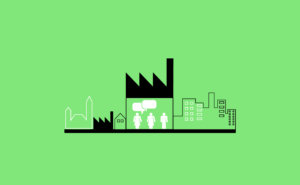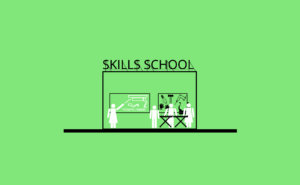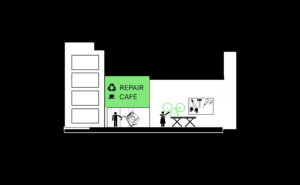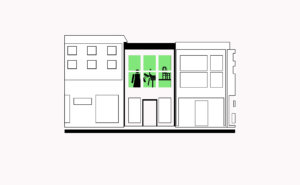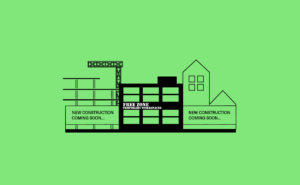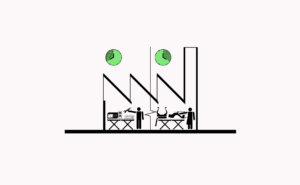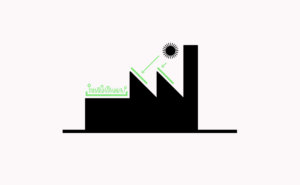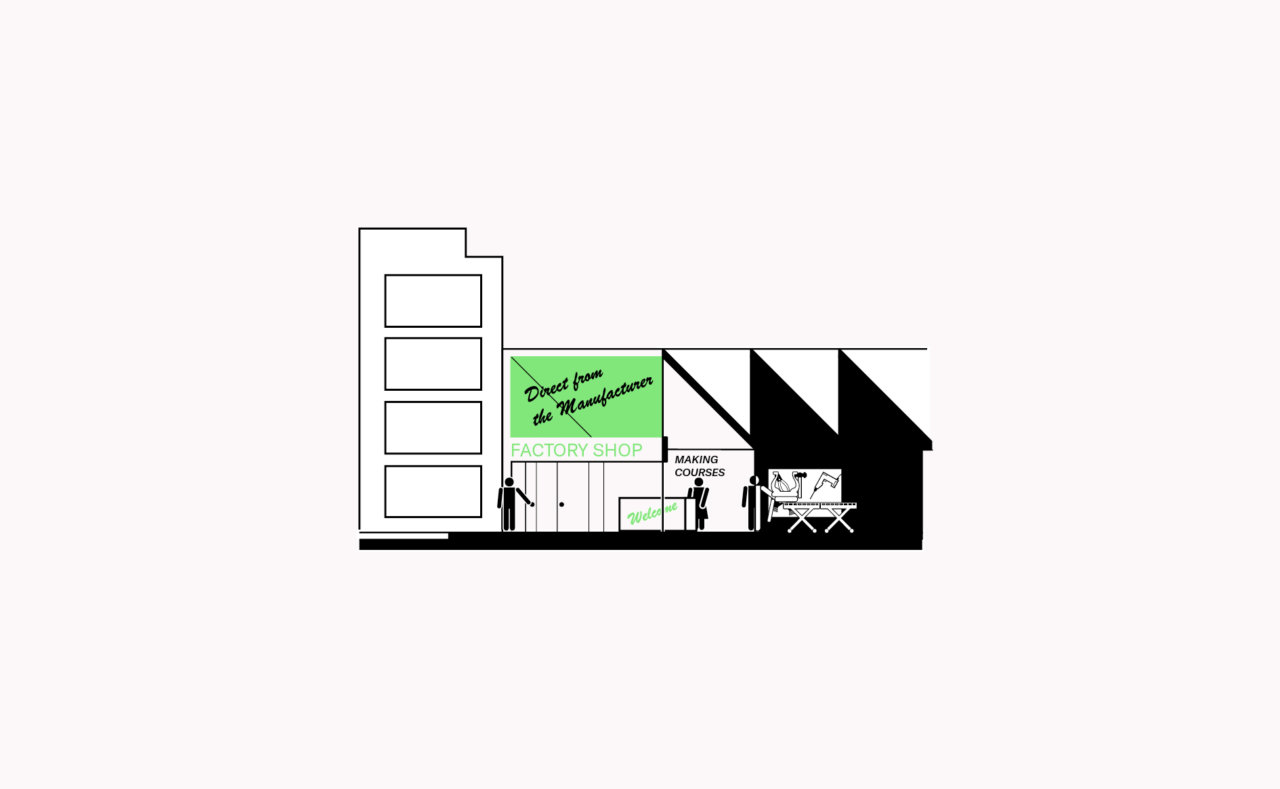
B.3 Public Face
Activities which have a public interface achieve better neighbourhood integration and acceptance, while improving exposure to clients.
[Context] Manufacturers are increasingly seeing the benefits of creating a stronger relationship with existing and future clients. Businesses are also increasingly aware of the importance of generating community relations to avoid possible conflict and to generate clients through word of mouth. Public façades and street related spaces allow both clients and the general public to have an insight into what is being produced on the site, (R1 Making Making Visible). The public face can include a range of different solutions with varying levels of visual access into the business. A glass façade and showroom can be enough to exhibit the business’ products. A shopfront or retail façade provide even greater accessibility by the general public to purchase a sample of the production process. Alternatively a business may choose to have a large section of the façade in glass, which allows the general public to watch the production process. Such interventions are particularly relevant to both small and large businesses who mix manufacturing with direct retail, education and training activities. For these businesses, the public face provides not only an aesthetic but also a functional interface between the business and the general public. For more discreet businesses, simple signage can be useful.
[Problem] Even when embedded in dense urban areas, contemporary manufacturing activities tend to be hidden from plain sight behind fences, blank walls or doors. This results in manufacturers having little presence or contribution to urban life at the street level. Manufacturing in general remains out of site and out of mind, making it invisible to many. As such, it can be deemed as undesirable for vibrant city life and expendable in urban renewal and development projects. Conversely, manufacturers which combine designing, selling and producing activities, often cannot find a suitable site in denser neighbourhoods that can offer a public face, since their manufacturing activities are not commonly perceived as ‘suitable’.
[Forces] As political will and public opinion are key drivers in the acceptance of manufacturing in mixed use areas, businesses are under pressure to better communicate their activities. A public face that provides visibility to its business activities can also reveal their working processes and be exposed to industrial theft. As such, public authorities should be careful in encouraging businesses in how to disclose their activities, communicating the business’ value to society, without forcing the business to give away more than necessary information.
[Solution] Improve the relationship between manufacturers and the general public with a public facing façade. Before doing so, the business should have very clear ambitions for what it aims to gain from increasing the link to the street. The level of interaction with the street should relate to the business’ values and the relationships it aims to build with their clients and the surrounding neighbourhood. Businesses with products requiring high levels of public trust, like food, can enforce this relationship with a public façade like a shopfront. A business, such as a pharmaceutical company, that requires high levels of security may simply offer signage. Achieving R.2 Transparent Manufacturing and R.1 Making Making Visible can be strengthened by a public face, and should be embedded in design regulations such as C.1 Microzoning. These rules should guide the interaction between the street, the community, and the manufacturing processes including windows, shop-fronts and public entrances. Smaller manufacturers and other professionals may also have shared premises, such as a P.8 Community Hub in Making Locations that can also be accessible by the local community. Manufacturing activities with a public face could also include well accessible P.7 Spaces for Development & Education, especially when they are N.10 Making Along High Streets. The physical public face could be complemented by open days and tours which may also offer an alternative revenue stream through tourism (see R.1 Making Making Visible).
[Contribution] Add contributions here.
